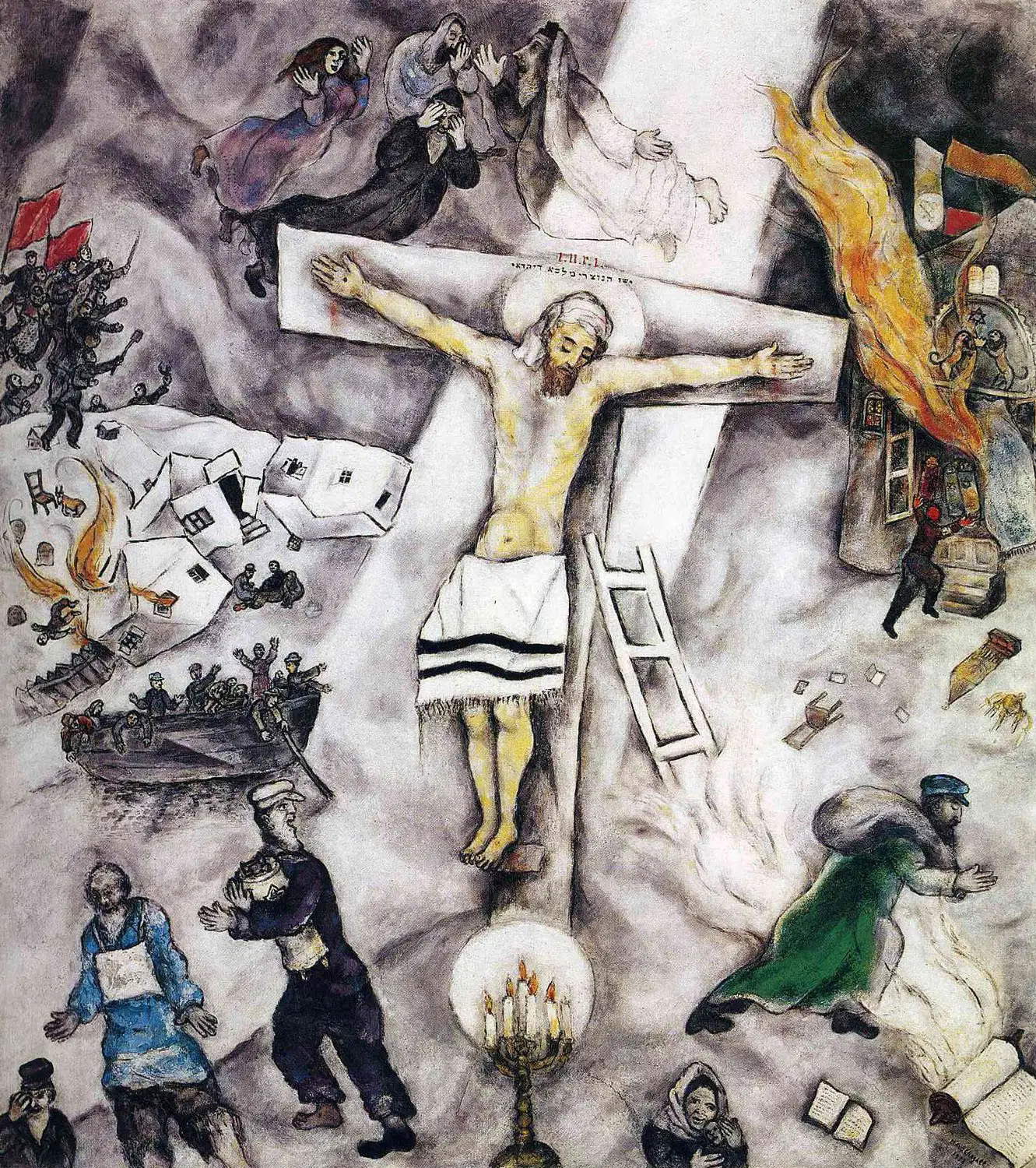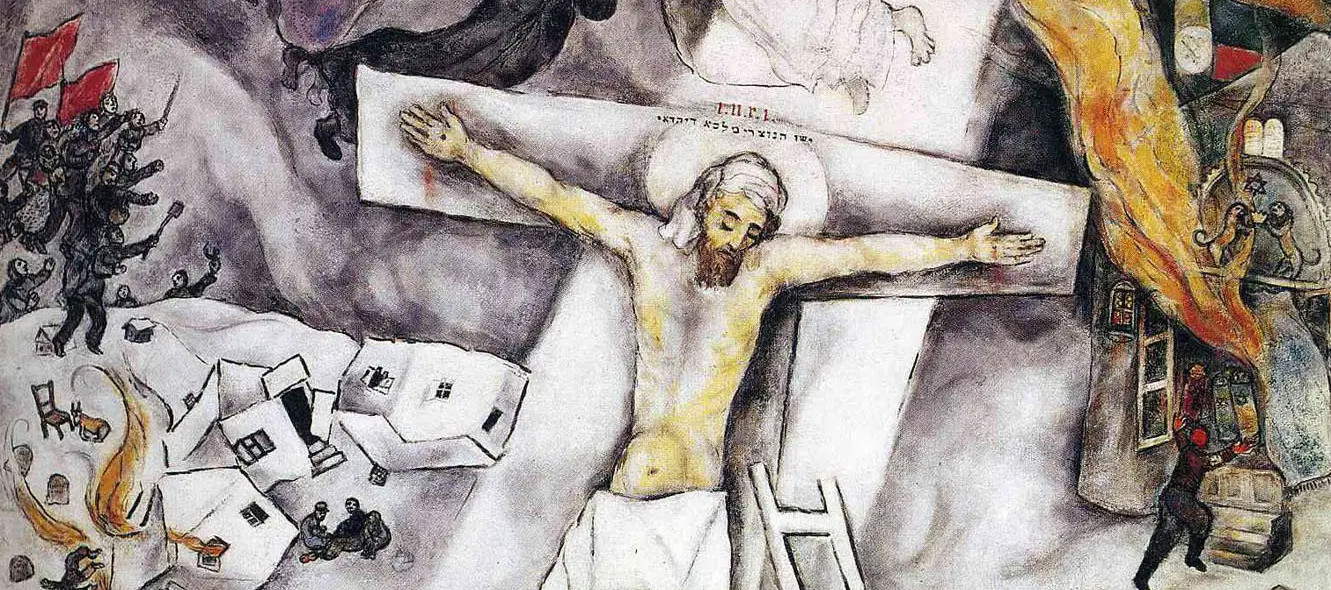Marc Chagall's White Crucifixion exhibited for the first time in Italy, in Rome
Marc Chagall’s White Crucifixion, from theArt Institute of Chicago, arrives in Italy for the first time: in fact, it will be exhibited from November 27, 2024 to January 27, 2025 at the Nuovo Museo del Corso - Polo museale, in the Palazzo Cipolla building in Rome. The inauguration took place this morning in the presence of local and institutional authorities. The initiative, conceived by the Dicastery for Evangelization - Section for Fundamental Issues of Evangelization in the World, is part of the program of artistic events related to the Jubilee 2025. The exhibition was organized in collaboration with the Fondazione Roma and is free admission.
Painted in Marc Chagall’s distinctive poetic and symbolic language, the work evokes historical and cultural references from the Jewish tradition. At the center of the scene, the crucified Jesus becomes a symbol of the suffering of his people and all victims of oppression, making the painting a universal message of pain. Created in 1938, the White Crucifixion depicts the suffering of Jesus and the Jewish people, recounting episodes of violence such as the burning of synagogues. At the center of the scene, Jesus is depicted on the cross, wrapped in a Jewish prayer shawl, emphasizing his identity as a Jew. Around the figure of Christ, Chagall inserts three biblical patriarchs and a matriarch, dressed in traditional Jewish garb. On either side of the cross, the devastation of the pogroms is depicted: on the left, a looted village forces its inhabitants to flee in a boat, while three bearded men escape on foot, one of them clutching the Torah. On the right side, a burning synagogue and the destroyed Torah ark represent devastation; below, a mother comforts her child.
Chagall’s White Crucifixion ranks among the most powerful artistic condemnations of war and hatred in the 20th century, a message that remains dramatically relevant today. Visitors will be able to see the work up close to delve into its symbolic power.
"The White Crucifixion is an extraordinary work," said Mayor Roberto Gualtieri at the opening of the exhibition. “We are really happy to be able to admire this masterpiece by Marc Chagall that expresses at the same time the tragedies of war and violence and the light of hope, brotherhood between peoples and the ability to look at fraternity as a fundamental principle.” “There is no work that can better interpret the spirit of the Jubilee,” the mayor concluded. “we are grateful to Monsignor Fisichella and the Fondazione Roma for this beautiful gift to the Romans and to all the faithful who will arrive for the first phase of the Jubilee.”
Hours: Daily from 10 a.m. to 8 p.m.

 |
| Marc Chagall's White Crucifixion exhibited for the first time in Italy, in Rome |
Warning: the translation into English of the original Italian article was created using automatic tools. We undertake to review all articles, but we do not guarantee the total absence of inaccuracies in the translation due to the program. You can find the original by clicking on the ITA button. If you find any mistake,please contact us.



























